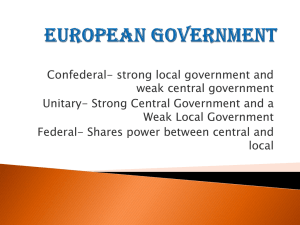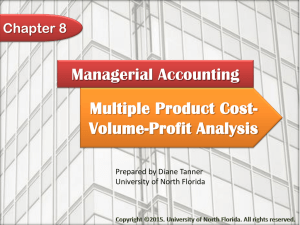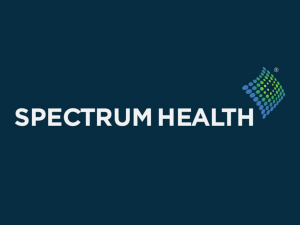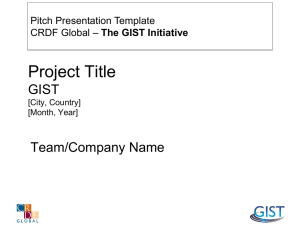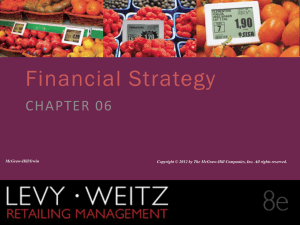Related Slide Deck
advertisement
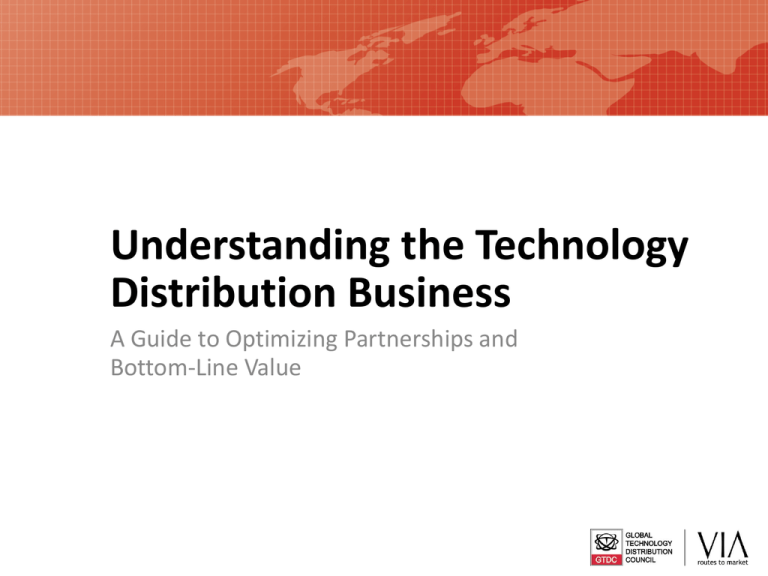
Understanding the Technology Distribution Business A Guide to Optimizing Partnerships and Bottom-Line Value Primer Contents 1 Introduction 2 The Role of the Distributor 3 How the Distributor Business Model Works 4 Margins and Profitability 5 Working Capital 6 Productivity Measures 7 Sustainability Measures 8 Managing Growth 9 How to Sell to Distributors as a Vendor 10 The Value of Distribution to a Vendor • Five Myths of Distribution • Nine Things Vendors Do That Make No Sense to Distributors The Role of the Distributor Typical Core Offering & Optional Services Distributors Provide to their Customers Typical core offering Typical optional services • • Sourcing of products • Back to back ordering • Simplified supply logistics • Consignment stocking • Repackaging • One-stop shop – range and availability Bulk breaking • Credit • Extended credit, project finance • First level technical support (pre-sales) • Second level technical support (post sales) – effectively acting as an outsourced provider of support • Technical training • Logistics – delivery • Logistics – drop shipment to ultimate customer • Order consolidation • Project management – coordinating the supply of several suppliers and shipping to multiple locations • Product information collateral • Marketing services – effectively acting as an outsourced provider Typical Core Offering & Optional Services Distributors Provide to Vendors Typical core offering Typical specialized services • Demand generation Channel recruitment Channel accounts and database Marketing fund deployment Special pricing management Teleweb outbound and inbound sales Regular Marketing mailings “Spiff” sales promotions Channel conferences Channel training Channel financing through credit provision In-market product management Front-line technical support • • • • • • • • • • • • • Demand generation • Channel account management • Program management • Co-op fund management • Special channel financing and credit offerings • End-customer marketing and lead generation programs • Conference and exhibition services • • • • • Supply fulfilment Bulk breaking Outbound Logistics Reverse logistics Channel credit risk Supply fulfilment • Consignment stocking • Vendor managed inventories • Vendor stock warehousing Market information Sales out reporting Channel intelligence • • • Market information • Channel research • End-customer research Outsourced services • Outsourced services • Warranty management • Break-fix operations • Second level and post-sales technical support • In-market representation • Trademark registration and protection • • • Spectrum of Distributors Defined by Business Model High Value added distribution Broadline distribution Margin Fulfilment distribution Low Low Revenue /Volume High Five Myths of Distribution 1. Vendors have to give up margin to the Distributor 2. Distributors are just order takers 3. Retailers and large resellers prefer to deal direct with vendors 4. Distributors move you one more step away from market signals 5. The internet/cloud has removed the need for distributors How the Distributor Business Model Works A Disti Co Summary Financial Statements Profit & Loss Account Balance Sheet The Distribution Balancing Act Long-term survival Value Creation Sustainability Gross margin return on working capital % Gross margin return on inventory investment % Return on Capital Employed / Return On Invested Capital Earn (margin management) Profitability % Gross margin $ % Contribution $ % Net margin $ Working capital Capital turn X DSO,DPO,Inventory Turn (Asset management) Value Levers: Where Distributors Create & Lose Value Value Created/ Destroyed Net Profit Capital Employed Operating Profit Interest Net Current Assets Overheads Gross Profit Logistics/Fulfilment model Sales Cost of Sales Working Capital Payables Back-office model Receivables Inventory Customer base & Value proposition Vendor & product portfolio and mgt Demand generation model Marketing & sales strategy Services portfolio Cost management capability Other current Assets/ liabilities Working Capital Management disciplines Weighted Average Cost of Capital Other Assets & Liabilities Value Creation Tree for A Disti Co - Year 1 Value creation -$48 Net Operating profit after tax 0.2% $40 -0.2% Return on invested capital 2.8% Operating profit $56 $1,008 Revenue $19,316 100% $4,129 Overheads $952 5.2% Cost of Goods Sold $18,308 94.8% 4.9% Cash Fixed assets $401 $423 Inventory $1,408 28 Receivables $1,897 36 Payables $1,550 31 Working capital $1,755 33 WACC 6.20% Excess cash & non int liabs $2,715 Total Assets 0.3% Gross profit Invested capital $1,414 Cash $401 Payables $1,550 Other current liabilities $764 Margins & Profitability Gross Margin % Gross margin % Gross margin % = Sales – Cost of sales Sales X 100 Comparison of Gross Margin % and Gross Margin $ earned on different brands Margin % Margin $ 500k 20 400k 15 300k 10 200k 5 100k New entrant B brand C brand Premium brand Market Leader Example of Blended Margin Calculation Product Sales price Cost price Gross margin Gross profit/ unit Volume Sales revenue Gross profit A $500 $450 10.0% $50 100 $50,000 $5,000 B $400 $352 12.0% $48 50 $20,000 $2,400 C $350 $322 8.0% $28 200 $70,000 $5,600 D $300 $279 7.0% $21 500 $150,000 $10,500 E $180 $168 7.0% $12 950 $171,000 $11,400 $461,000 $34,900 Total 7.6% Contribution Margin % Contribution margin % Contribution margin % = Sales – Cost of sales – Variable costs Sales X 100 Contribution Margin % Customer Gross Margin Marketing driven costs Sales driven costs Logistics driven costs Inventory driven costs Transaction driven costs Finance driven costs Customer Contribution Example Contribution Statement Turnover - C.O.S I =Gross Profit I Customer bonus Cust. Cash disc. Int. on customers - C.O.S. II = Gross Profit II - Int. on suppliers - Stock depreciation - C.O.S. III = Gross profit III - 175,149 166,651 8,499 184 783 979 168,596 6,553 1,512 379 166,705 8,444 Costs - Logistics - Purchasing - Production = Contribution I - Marketing Marketing costs Marketing income = Contribution II - Sales - Bookkeeping - Organisation - EDP - Personnel - Internal admin = Contribution III 1,319 890 1,473 4,762 - - 343 705 1,048 5,105 1,657 62 31 152 170 222 2,811 Example Customer Profitability Analysis Turnover 156,115 Cost of Goods Sold 145,194 Gross Profit Transport costs Picking & packing Cost of financing receivable Rebates given Commisssons paid Other variable costs Net Profit 5,878 3.8% 4,266 2.7% 2,310 1.5% 1,203 1,013 1,354 545 216 1,613 Contribution Profit 2 Indirect costs allocation 7.0% 712 Contribution Profit 1 Direct cost allocation 10,921 1,955 Operating & Net Margin % Operating margin % Sales – Cost of sales – Overhead costs Operating margin % = X 100 Sales Net margin % Sales – Cost of sales – Overhead costs - Interest Net margin % = Sales X 100 Working Capital The Working Capital Cycle Purchase products Purchase on supplier credit terms – pay cash when required Sell on customer credit terms – collect cash when dunned eg 43 days DSO Working capital eg 34 days eg 46 days DPO Store/warehouse products Sell products Hold sufficient stock to cope with fluctuations in demand & to cover supplier order-to-delivery time eg 31 days DIO Days Payable Outstanding (DPO) Days Payable Outstanding (DPO) DPO = Accounts payable Cost of Sales X 365 days Inventory Days (DIO) Inventory days (DIO) DIO = Inventory Cost of Sales X 365 days Days Sales Outstanding (DSO) Days Sales Outstanding (DSO) DSO = Accounts receivable Sales X 365 days Working Capital Turn Working capital turn Working capital turn = 365 days Working capital days Example Working Capital Profiles Working capital Starting profile Days $ value Improved profile Days $ value DIO 40 2.08m 35 1.82m DSO 45 2.47m 40 2.19m DPO -25 -1.30m -30 -1.56m 60 $3.25m 45 $2.45m WC days WC turn 6 times per year 8 times per year Example Working Capital Profiles Working Capital Component Days Starting Point Days Value $ Improved profile Days Value $ Improvements Days Value $ Inventory DIO 40 2.08m 35 1.82m -5 0.26m Receivables DSO 45 2.47m 40 2.19m -5 0.28m Payables DPO -25 -1.30m -30 -1.56m -5 0.26m 60 3.25m 45 2.45m -15 0.8m WC Days WC Turn 6 times a year 8 times a year EXTRA CASH TO BUY MORE PRODUCT ! Productivity Measures Gross Margin Return On Inventory Investment (GMROII) Gross Margin Return on Inventory Investment (GMROII) GMROII = Gross profit Inventory = Gross profit Sales “Earn” X X Sales Inventory “Turn” Contribution Margin Return On Inventory Investment (CMROII) Contribution Margin Return on Inventory Investment (CMROII) CMROII = Contribution profit Inventory = Contribution profit Sales “Earn” X X Sales Inventory “Turn” Product Portfolio Profiled in Terms of “Earn” and “Turn” Characteristics Contribution margin % 20 Sleepers Winners 18 16 14 12 10 Losers 8 Traffic builders 6 4 2 0 0 100,000 Extracted from VIA case study 200,000 300,000 Volume $ 400,000 500,000 600,000 Gross Margin Return On Working Capital (GMROWC) Gross Margin Return on Working Capital (GMROWC) GMROWC = Gross profit Working capital = Gross profit Sales X Sales Working capital Working capital = Inventory + Accounts receivable – Accounts payable Contribution Margin Return On Working Capital (CMROWC) Contribution Margin Return on Working Capital (CMROWC) CMROWC = Contribution profit Working capital = Contribution profit Sales X Sales Working capital Sustainability Measures Return On Net Assets (RONA) Return on Net Assets (RONA) RONA = Operating profit Cash + Working Capital + Fixed Assets Return On Capital Employed (ROCE) Return on Capital Employed (ROCE) ROCE = Net Operating Profit After Tax Total assets – Non-interest bearing liabilities Return On Invested Capital (ROIC) Return on Invested Capital (ROIC) ROIC = = Operating profit after tax Invested Capital Net Profit after tax + Interest Total assets – excess cash – non-interested bearing current liabilities Value Creation (VC) Value Creation (VC) VC = Operating profit after tax – (Invested Capital X WACC) Different Measures for Different Stakeholders Measure Used for Used by Stock Price/EPS Valuing the business & evaluating future prospects Current & prospective stockholders Value Creation & ROCE Assessing the performance of the business as an investment Investors RONA Assessing the operational performance of a Business Unit, Subsidiary or Division (which has a discrete set of Assets) Senior Management ROIC CMROWC *All metrics More precise measure for setting targets and incentives: focuses on the operating components of business mode, and on relevant portion of shareholders funds When correctly scoped*, should include all aspects of performance which a vendor can influence in their contribution to the ROIC Are closely linked and can often be calculated in different ways from those set out here Should hold people accountable for those parts of the business model which they can influence Senior & operational Management Operational /Product Managers; Account Managers A Disti Co Example of How Business Model Changes Impact Value Creation Value creation Year 2 Year 1 Year 2 Year 1 Net Operating profit after tax $78 0.4% $40 0.2% $2 -$48 Return on invested capital 6.4% 2.8% Operating profit Year 2 Year 1 $110 $56 Year 2 $1,090 Year 1 $1,008 Revenue Year 2 Year 1 $21,248 $19,316 100% 100% $4,313 $4,129 0.3% 5.1% 5.2% Overheads Cash $980 $952 $376 $401 4.6% 4.9% Cost of Goods Sold $20,158 94.9% $18,308 94.8% Fixed assets $434 $423 Inventory $1,492 $1,408 $2,010 $1,897 27 28 35 36 Payables Year 2 Year 1 $1,814 $1,550 33 31 Working capital Year 2 Year 1 $1,689 $1,755 6.20% 6.20% Cash $376 $401 Payables Receivables Year 2 Year 1 WACC Excess cash & non int liabs $3,092 $2,715 Total Assets 0.5% Gross profit Invested capital $1,221 $1,414 29 33 $1,814 $1,550 Other current liabilities $902 $764 Managing Growth Potential Growth Capacity Potential Growth Capacity % Potential growth capacity % = Net Margin after tax % X Working Capital Turn Profile of Contribution Margin and Fixed Costs as Sales Increase Sales $ Net losses Contribution after variable costs Fixed costs Net profits Volume (Units) Profile of Contribution Margin & Fixed Costs with Delayed Investment Sales $ Net losses Contribution after variable costs Fixed costs Net profits Volume (Units) Potential Growth Capacity Potential Growth Capacity % Potential growth capacity % = Net Margin after tax % X Working Capital Turn Managing Growth Vendor Gross Profit Contribution to Covering a Distributor’s Fixed Costs 5,000,000 Variable costs 4,500,000 4,000,000 3,500,000 3,000,000 Fixed costs 2,500,000 2,000,000 1,500,000 1,000,000 500,000 ABC Co costs Gross profit on Supplier Example of Impact on A Disti Co’s Business of Adding a Product Line Value creation Year 2 Year 1 Net Operating profit after tax Year 2 $78 0.4% Year 1 $40 0.2% $2 -$48 Return on invested capital 6.4% 2.8% Operating profit Year 2 Year 1 $110 $56 Year 2 $1,090 Year 1 $1,008 Revenue Year 2 Year 1 $21,248 100% $19,316 100% 5.1% 5.2% $4,313 $4,129 Cost of Goods Sold $20,157 94.9% $18,308 94.8% Overheads Cash Fixed assets $981 $952 $376 $401 $434 $423 4.6% 4.9% Inventory $1,492 $1,408 27 28 Receivables Year 2 Year 1 $2,011 $1,897 GMROII Year 2 Year 1 73% 72% GMROWC Year 2 Year 1 65% 57% 35 36 Payables $1,814 $1,550 33 31 Working capital $1,690 $1,755 29 33 WACC 6.20% 6.20% Excess cash & non int liabs $3,092 $2,715 Total Assets 0.5% 0.3% Gross profit Invested capital $1,222 $1,414 Cash $376 $401 Payables $1,814 $1,550 Other current liabilities $902 $764 Value of Distribution Value of distribution to the vendor Risk minimisation Increased market access Accelerated time to market Economic efficiencies Net Profit after tax Total assets – Non-interest bearing liabilities Reduced working capital = ROCE Stock price Substantial Improvement Specialist services required by different channels Value of distribution to the reseller Enable end customer focus One-stop shopping Outsourced marketing & logistical activities Net Profit after tax Total assets – Non-interest bearing liabilities Reduced inventories & Increased credit TALC advice & services = ROCE Business value Substantial Improvement Specialist services required by different end customer segments Nine Things Vendors Do That Make No Sense to Distributors 1. 2. 3. 4. 5. 6. 7. 8. 9. Variable cost discounts by major brands Constantly change the personnel managing the relationships Keep fiddling with the rules for “pay for results” programs Set Ts and Cs for the whole business that do not recognize the different business models involved in reaching consumer, SMB and Enterprise SKU proliferation Set pan-European Ts & Cs Appoint too many distributors Promote too many deals Appoint account managers that don’t understand the Distribution business model



